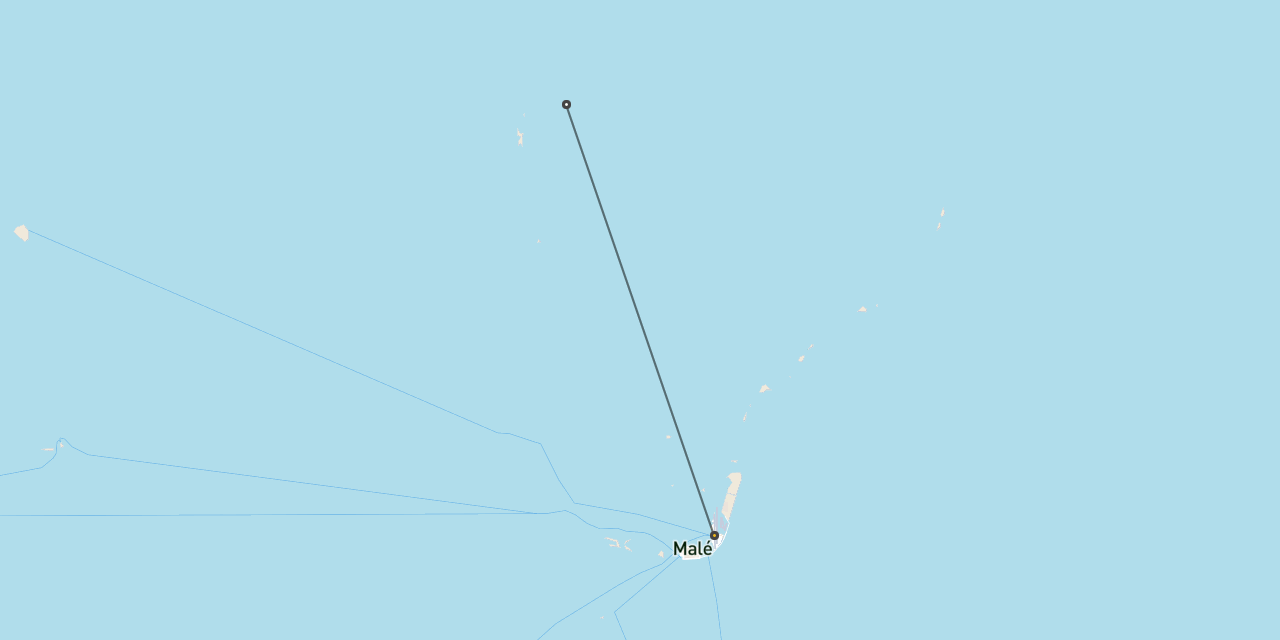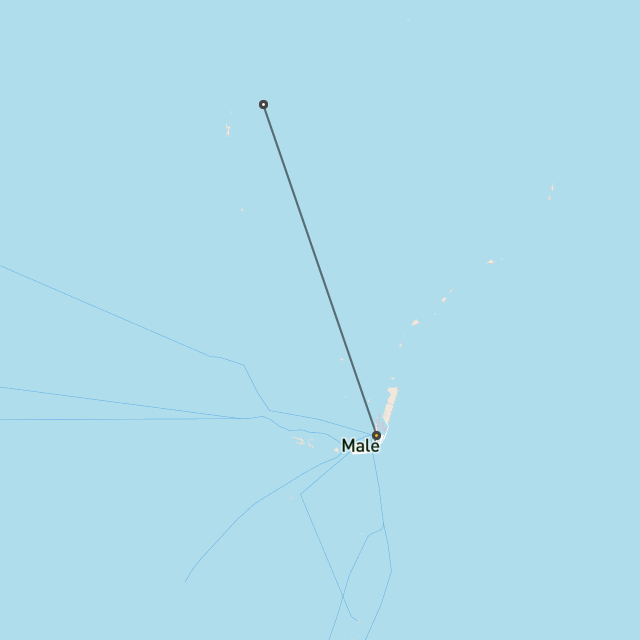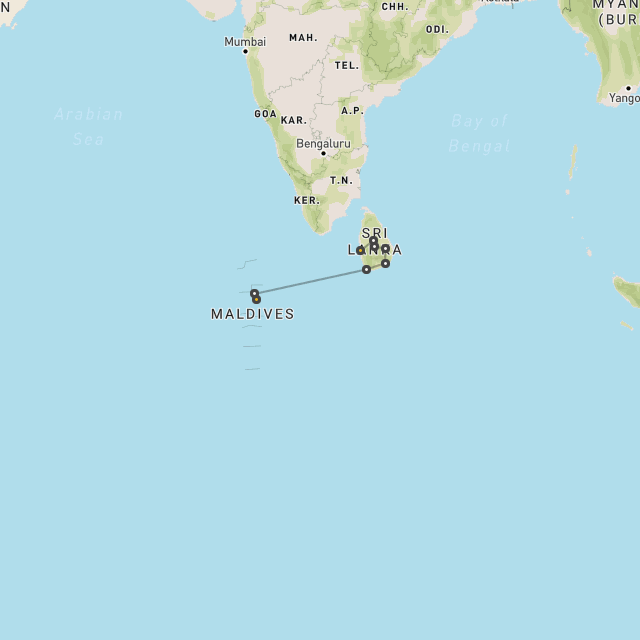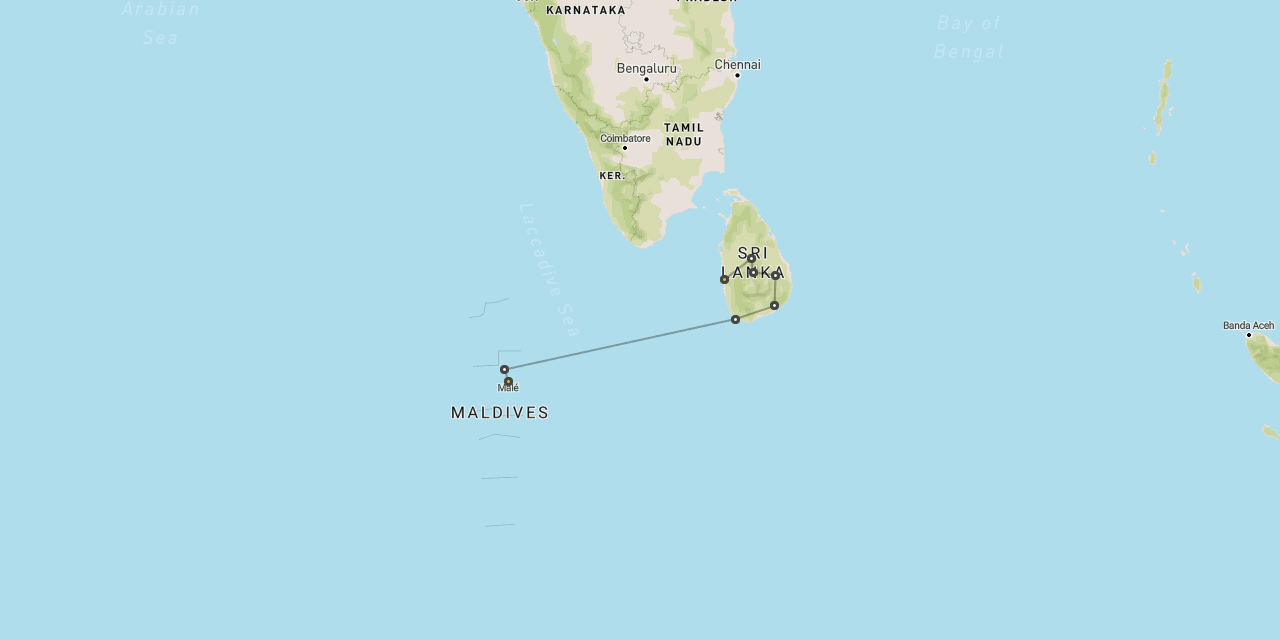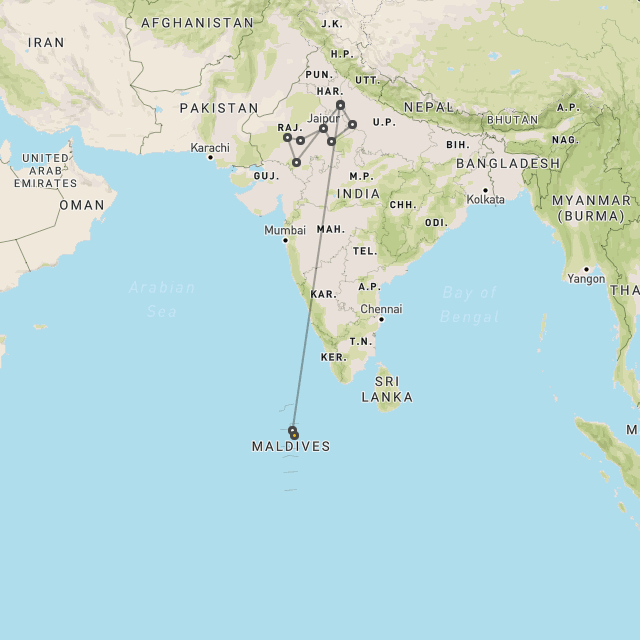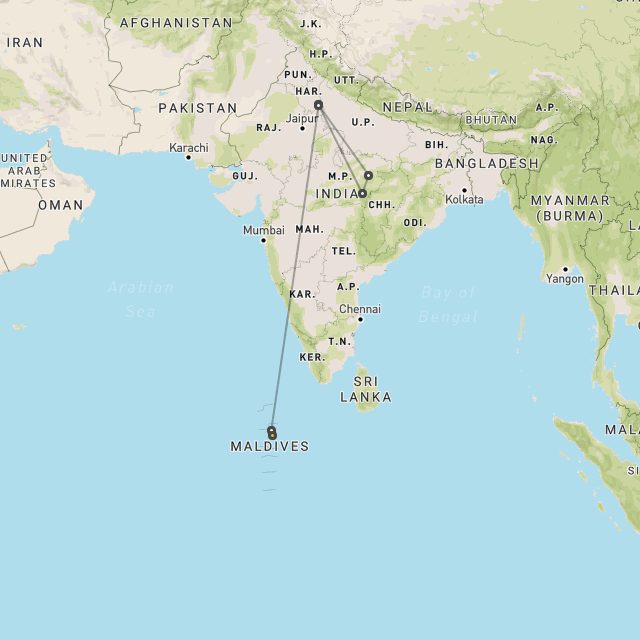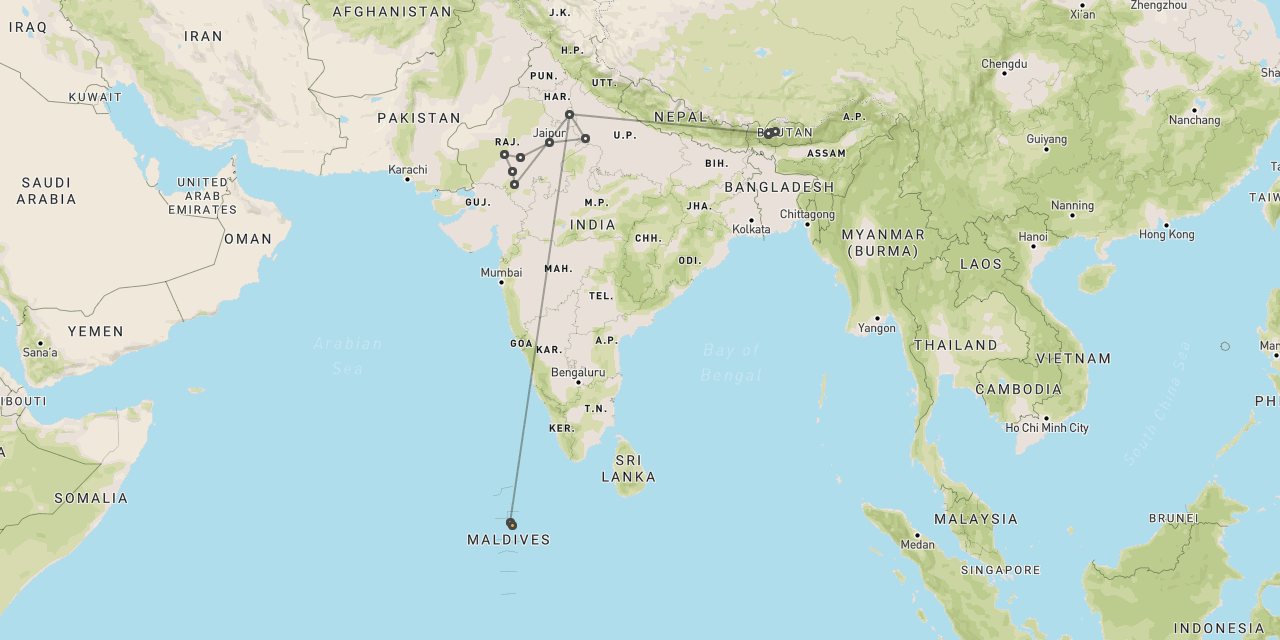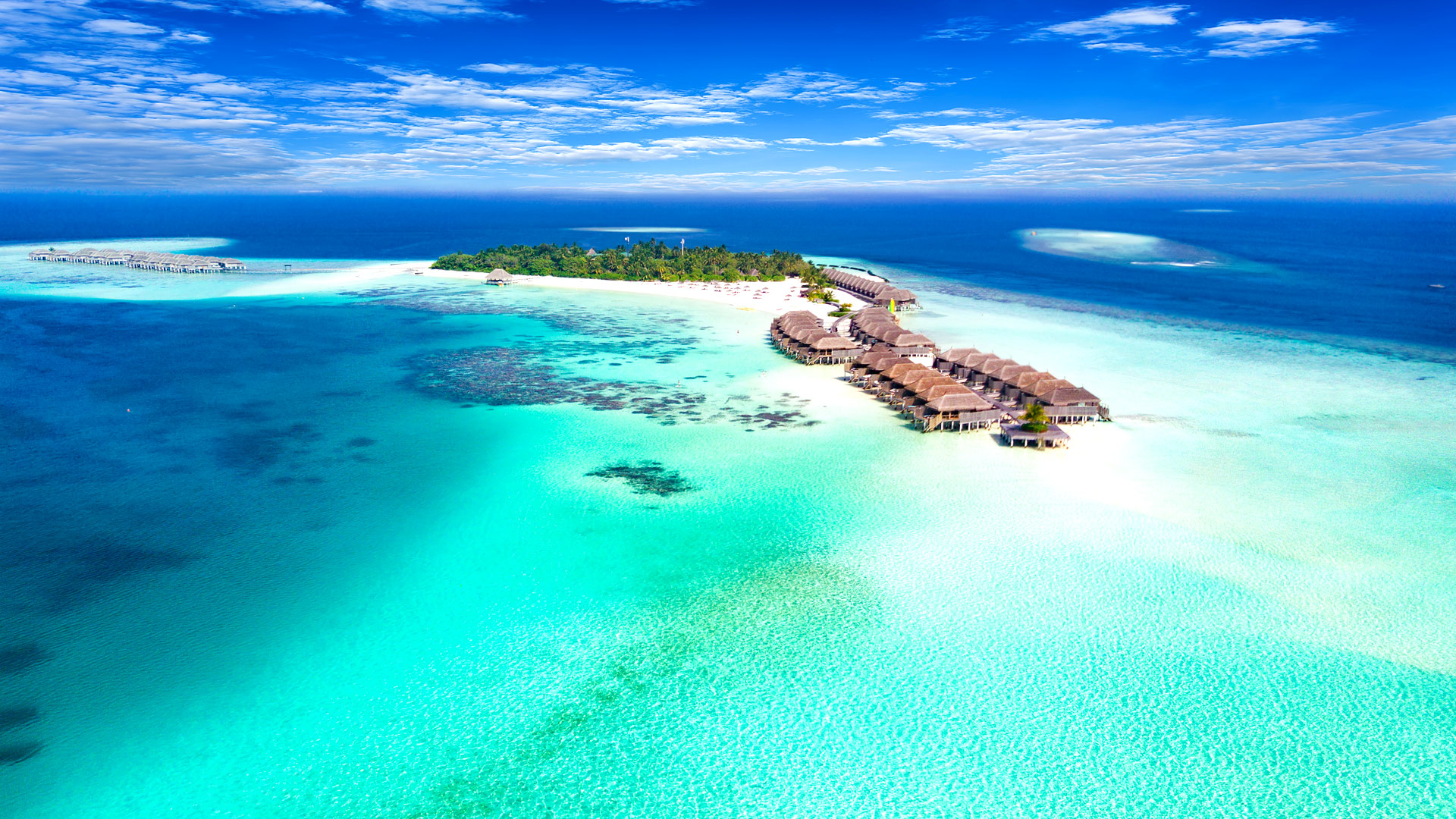
Travel in the Maldives
The Maldives
is the premium beach location
in the Indian Ocean

over thirty high quality resorts
The Maldives is an extensive group of tropical atolls that lies in the Indian Ocean around 500 km (300 miles) south of the tip of India.
This independent republic is comprised of 1192 small coral islands, grouped into 26 circular atolls, of which 200 are inhabited by local people and a further 150 are utilised for tourism.
Although these islands are spread across around 100,000 square kilometres of ocean, the land surface only adds up to around 300 square kilometres. With a population of around 500,000 people (which doubled during the years 2000-2020), the Maldives is the ninth most densely populated country in the world. This seems quite counter-intuitive to the blissful isolation that can be experienced on so many of the more remote islands.
The people of the Maldives are classified as Indo-Aryan, with traces of Middle Eastern, South Asian, Austronesian and African genes within the population, reflecting the nation’s central position throughout thousands of years of maritime trade in the Indian Ocean. There’s also an expat community of around 150,000, largely comprised of people from Bangladesh and the Philippines, most of whom work in tourism. English is widely spoken as a second language.
The capital city of Malé is centrally located, a tightly-packed high-rise urbanisation, which is home to almost half of the population. The international airport is situated on the adjacent island of Hulhulé, which is the main point of entry for the vast majority of visitors.
The Maldives has been an independent Islamic state since around 1150 AD, punctuated by an extended period of British colonial ‘protection’ 1796-1965. The re-establishment of independence was followed by decades of political instability, but in recent times the governance has been much improved, providing a reasonably stable background for tourism.
The main political focus in recent years has been on the considerable environmental challenges faced by the islands, which are naturally very exposed to changes in sea levels (the average elevation is just 1.5 metres) and temperatures (having already experienced major coral bleaching events). The country’s leaders have been very vocal at international climate change summits and have themselves pioneered the move towards a carbon-neutral economy.
The economy of the Maldives has historically been dominated by fishing, but with tourism rapidly increasing over recent decades, now reaching around two million visitors per year, generating over 90% of government revenues.
The Maldives now contain around 150 tourist resorts, the majority of which are located on private islands, scattered throughout the various atolls and largely accessed by internal flights. Most of these are very large properties, with 50-300 accommodation units, more often than not spilling out from their islands on networks of boardwalks which fan out into their coral lagoons.
These islands are renowned for offering the ultimate in tropical island luxury, with many of the resorts commanding absolutely eye-watering price tags. But there is also a good range of more modestly-priced options too.
The main activities are pure relaxation, fine dining, spa treatments, diving, snorkelling and sailing, with some modest cultural interaction in some areas.
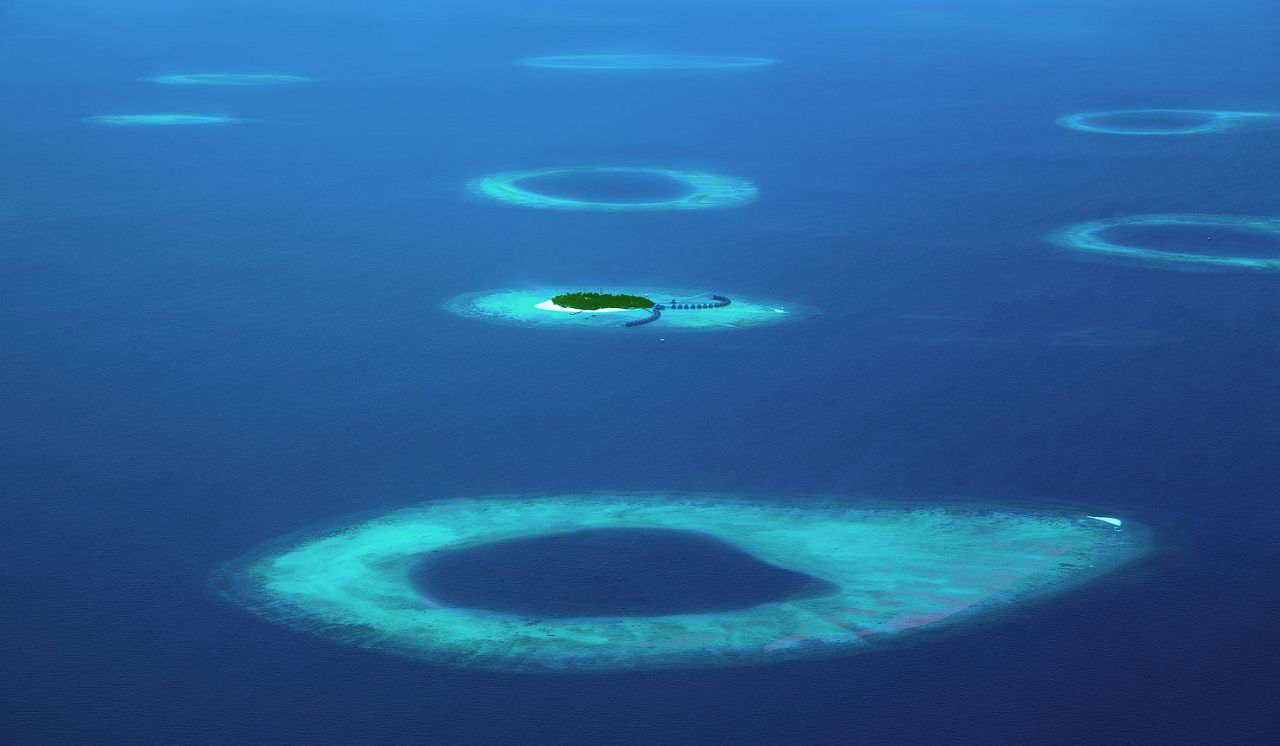
Gallery
Map
The best time to visit the Maldives is generally considered to be during the Nov-Apr dry season.
It is important to realise that the islands are spread out across a vast area of ocean and experience quite different seasonalities north to south.
The islands to the north (which include some of our favourites), experience a much longer and more pronounced dry season, all the way through Nov-Apr, with low rainfall and high sunshine hours.
The islands to the centre and south have a much less pronounced dry season, Jan-Mar, meaning that the choice of islands is particularly important during November, December and April.
This dry season coincides conveniently with the most popular time to visit India.
During the converse season, the rainfall can get pretty serious, but it tends to fall in predictable daily downpours, with the same high temperatures and a good deal of sunshine.
Prices tend to be quite variable in the Maldives, with lodges often premium-pricing the popular months and discounting heavily through quieter periods. The savings are often sufficient to offset the variations in the weather.
Getting there
The vast majority of visitors arrive into the Maldives through Velana International Airport, on the island of Hulhulé, which is adjacent to the capital Malé. The airport is widely connected to locations including India, Sri Lanka, Doha, Dubai, Singapore, Istanbul and major airports in Southeast Asia, as well as direct charter flights from Europe.
Gan Airport, on the southern atoll of Addu, also receives some direct international flights, notably charters from Milan in Italy.
The main way to travel between islands in the Maldives is by domestic flights. There are twelve airstrips on outlying atolls, the remainder being serviced by sea-planes, which land directly in the coral lagoons.
Shorter transfers are typically carried out by motorboats, connecting the various airports to the various island resorts.
For independent travellers and those with more time on their hands, there are also domestic ferry services and traditional vessels (dhonis) plying various routes.
Where to stay
The majority of visitors to the Maldives stay in just one resort, but it is more than possible to combine two or more resorts, if you fancy experiencing different styles of architecture and hospitality. It can also be a good idea if you are keen divers.
The best way to choose a lodge is usually to decide where in the price range you want to be, then run through the options, simply selecting the place that takes your fancy.
A few things to look out for are how many rooms a place has, how tightly they are packed onto their island and how far the island is from the main airport, the various centres of habitation and other lodges.
If you are primarily interested in diving, then please refer to the dedicated section above on advice where to stay.
We generally prefer to lean towards more remote islands with fewer rooms, although those options are often the more expensive …
big seasonal price variations
let us know your thoughts about the Maldives
and we will help you create the perfect trip

Extraordinary tailor-made adventures,
from earthy and edgy to easy and extravagant
From around USD 2500 per person, you set the ceiling
Sample Trips
Here are some of our popular trip shapes

Get started on your trip
It’s never too soon to get in touch, we are here to help with every stage of your planning.
Best Lodges
We regularly inspect and photograph all of the the best lodges, to ensure that we always recommend the most suitable options
Key Locations
Take a look around related locations. Click ‘View more’ to explore locations further afield.
Where Next?
Where Next?
We offer trips to dozens of fabulous countries.
Might one of these might be your next great adventure?

Please rotate your screen.



































